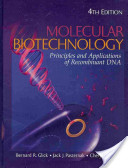


Author Name = Claire M. Fraser
Realeased On = Releases On 2004
One of the main milestones of the promising branch of science recognized as genomics be the decoding of the human genome. More than 3 gig abases of DNA series establish their way to the databases and into scientific publications. Yet barely a decade later, have biologists progress beyond sequencing genomes as a main goal. We want to be acquainted with what organize genomes in dissimilar organisms, and we desire to tinker until we have organisms with the smallest genome possible. How does everything fit in one big interacting network of genes, mRNA, and proteins?
The human genome was analyzed for proof that genes had been crossways transferred into the genome from prokaryotic organisms. Protein sequence comparison of the proteomes of human, fruit fly, nematode worm, yeast, mustard weed, eukaryotic parasites, and all completed prokaryote genomes were performed, and all genes communal between human and each of the other group of organisms were collected. About 40 genes were found to be exclusively shared by humans and bacteria and are candidate examples of horizontal transfer from bacteria to vertebrates. Gene loss joint with sample size effects and evolutionary rate difference provide an alternative, more biologically reasonable explanation.
This collection of diverse articles by the pioneer of current genomics takes store of the current state of the field and elucidates the payment that sequencing genomes has complete to our understanding of microbial metabolism and evolution.